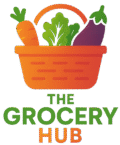Have you ever noticed how two shops in the same street sell the same rice packet, but one shop is always a little cheaper? 🤔 The secret is simple — wholesale buying at the right price. If you run a kirana shop, supermarket, or even if you just buy monthly groceries in bulk for your family, knowing the grocery wholesale price list can save you thousands every month.
Let’s dive into why wholesale matters, how discounts work, and where you can actually find the best deals on groceries.
Why the Grocery Wholesale Price List Matters
Think of the price list as a cheat sheet for smart shopping. It’s not just about numbers, it’s about strategy.
- For a shopkeeper, it’s the difference between earning a slim margin or doubling your profits.
- For a restaurant, it’s the key to serving delicious meals without overspending on ingredients.
- For a household, it means cutting down your monthly grocery bill.
In short, the grocery wholesale price list is like a map that leads you to savings.
Why Buying Groceries Wholesale is a Smart Move
You’ve probably heard the saying: “Buy more, save more.” But how does it actually work?
1. The More You Buy, The Less You Pay
A single packet of sugar may cost you ₹50 at retail, but buying a 50kg sack drops the price to ₹40/kg or even less. Multiply that saving across rice, oil, pulses, and flour—and suddenly you’ve kept thousands in your pocket.
2. Stronger Margins for Retailers
If you’re a shop owner, your customers will always compare prices. Buying wholesale gives you the freedom to sell at market rates while still keeping a healthy margin.
3. Peace of Mind with Stock
No one likes empty shelves. Buying wholesale ensures you never run out of essentials—whether it’s wheat, tea, or cooking oil.
4. Seasonal & Festival Discounts
Wholesalers often run discounts around Diwali, Eid, or harvest seasons. If you stock up smartly, you can ride the wave of low-cost buying + high-demand sales.
A Glimpse at a Grocery Wholesale Price List
Here’s a sample price list to give you an idea of how wholesale prices look compared to retail.
| Grocery Item | Retail Price (Approx) | Wholesale Price | Bulk Discount Price |
|---|---|---|---|
| Basmati Rice (25kg) | ₹2,500 | ₹2,200 | ₹2,050 |
| Wheat Flour (10kg) | ₹500 | ₹450 | ₹430 |
| Sugar (50kg) | ₹2,600 | ₹2,350 | ₹2,200 |
| Cooking Oil (15L) | ₹2,400 | ₹2,200 | ₹2,050 |
| Toor Dal (30kg) | ₹4,800 | ₹4,400 | ₹4,200 |
| Tea (5kg Pack) | ₹2,000 | ₹1,800 | ₹1,650 |
👉 Note: These are just sample figures. Actual prices vary depending on your city, supplier, and purchase volume.
Where Do You Find Wholesale Discounts?
Now, the million-rupee question: Where do you actually get these prices?
1. Local Wholesale Markets
Every major city in India has wholesale mandis. Delhi’s Azadpur, Mumbai’s Vashi APMC, Chennai’s Koyambedu—these are treasure troves of cheap groceries.
2. Direct Distributors
If you deal with brands like Tata, Fortune, or Patanjali, tying up with their distributor gets you bulk rates directly—no middleman.
3. Online Wholesale Platforms
In today’s digital age, apps like Udaan, JioMart, Amazon Business, and IndiaMART let you order wholesale groceries from your phone.
4. Cash & Carry Stores
Metro Cash & Carry, Reliance Market, and Walmart stores are great if you prefer physical shopping but still want wholesale rates.
Pro Tips to Save Even More
Over the years, retailers and smart buyers have shared some tricks that always work:
- Buy in Season: Rice and dal are cheapest post-harvest. Stock up then.
- Negotiate Like a Pro: Don’t accept the first price. Most wholesalers are flexible if you’re buying big.
- Compare 2–3 Suppliers: Even a ₹2 difference per kg adds up in bulk.
- Join Buyer Groups: Many shopkeepers pool money together and buy huge quantities to unlock bigger discounts.
- Track Price Trends: If oil prices are expected to rise, buy early and save.
Who Benefits from Wholesale Price Lists?
You might think wholesale is only for businesses. Not true. Here’s who gains the most:
- Small Shop Owners (Kirana Stores): Keeps them competitive.
- Supermarkets: Helps maintain huge inventories without burning cash.
- Restaurants & Cafés: Cuts costs on daily ingredients.
- Families: Large families save a lot on monthly bills with bulk buying.
- Caterers & Event Planners: Essential for buying big quantities at low rates.
Real-Life Example: How Bulk Buying Saves
Let’s say a kirana shop buys 50kg of sugar.
- Retail cost = ₹50/kg × 50 = ₹2,500
- Wholesale cost = ₹2,200 (saving ₹300)
- Bulk discount = ₹2,050 (saving ₹450 total)
Now imagine this across 10–15 grocery items every month. That’s thousands saved, or extra profit earned.
Final Thoughts
At the end of the day, the grocery wholesale price list is more than just numbers—it’s the foundation of a smart shopping strategy. Whether you’re a small shop owner trying to maximize profits or a family looking to cut down household expenses, the rule is simple:
👉 Buy More, Save More.
The next time you step into a wholesale market or open an app, remember to compare, negotiate, and always check for bulk discounts. Because in groceries, every rupee saved is a rupee earned.

